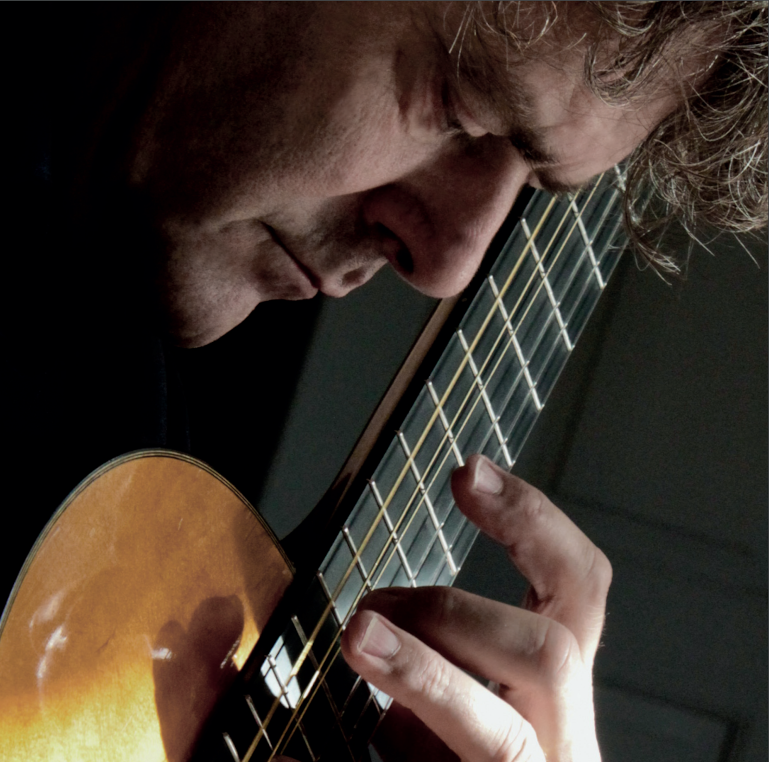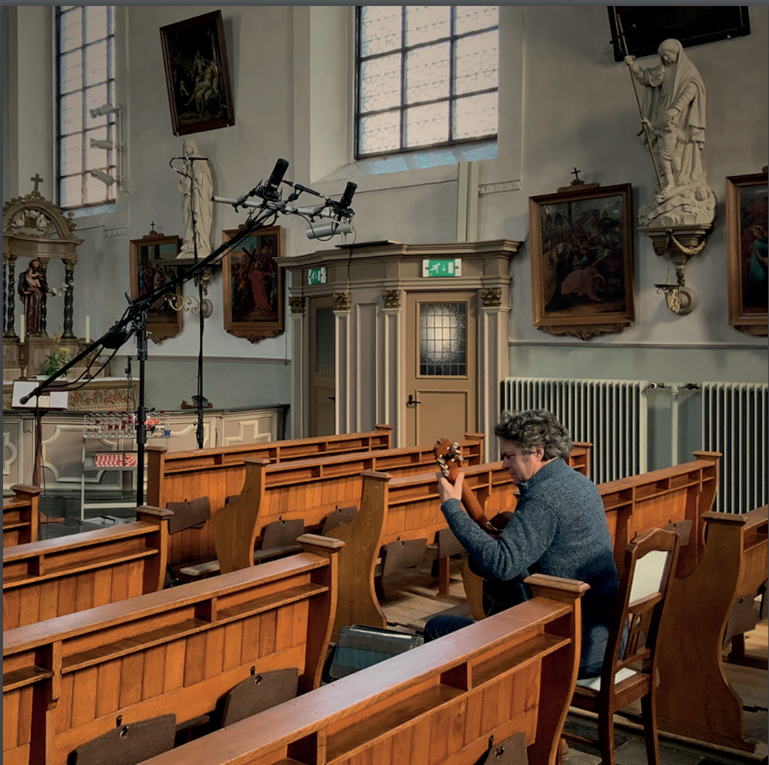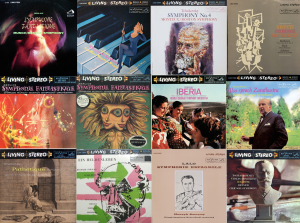A thoroughly engaging and well-spent hour with this delightfully articulate guitarist. Enno Voorhorst is a master of subtle grace, dynamic drive, and brilliant technique. But, he never allows his huge technique to overshadow his musically compelling communication of nuance and emotion.
840 - Enno Voorhorst, guitar. Cobra Records 2022 (Pure DSD256). HERE
In this album, Enno Voorhorst has assembled an intriguing program with music by Erik Satie (1866 - 1925) woven throughout and complemented by works from Francis Poulenc, Louis Andriessen, Jean Françaix and others. Voorhorst seems to play reflectively for himself, not an audience. Listening to this recording, I felt like a privileged observer allowed to sit in on Voorhorst's most intimate, personal reflections as he communes with these musical compositions. We are granted the unique privilege of listening in to a very private space, with nothing between us and the sound of his guitar and no one else around.
Erik Satie is a complex and most intriguing composer. Some early reviewers called him a charlatan, but according to Stravinsky Erik Satie was one of the great composers of his day standing beside Bizet and Chabrier. Debussy arranged his two Gymnopédies for orchestra successfully and in 1969 the band Blood Sweat & Tears adapted the two Gymnopédies in a track named "Variations on a theme by Erik Satie." Their eponymous album won a Grammy award for Best Album of the Year and the track won a Grammy for Best Contemporary Instrumental Performance. By now you must be getting the idea that Satie might have something to say in his music. And, indeed, his music is noteworthy for the ironical, absurd and funny imbued by Satie's deeply rooted dislike of convention in all its forms.
The title of this album, 840, derives from Satie's notation about preparing to perform his avant garde work, Vexations, composed in 1893. It is written in the 12-tone style, thirty years ahead of Schoenberg and it lasts only 1.5 minutes. Satie placed an instruction above the score: "to play oneself this motif 840 times in a row, it would be good to prepare oneself in advance, in the most profound silence, by serious immobility's." While John Cage actually arranged a performance of Vexations in 1963 strictly following these instructions (it took 18 hours to perform), Voorhorst comments that this note from Satie "seems an absurd suggestion rather than a mandatory instruction." Nonetheless, the note is illustrative of Satie's wry humor so evident in his music.
And, speaking of John Cage (1912 – 1992), track 20 on this album contains his notorious (iconic?) three-movement composition 4'33" (pronounced "four minutes, thirty-three seconds" or just "four thirty-three"). It was composed in 1952, for any instrument or combination of instruments, and the score instructs performers not to play their instruments during the entire duration of the piece throughout the three movements. The piece consists of the sounds of the environment that the listeners hear while it is performed, although it is commonly perceived as "four minutes thirty-three seconds of silence." The title of the piece refers to the total length in minutes and seconds of a given performance, 4'33" being the total length of the first public performance. Have I listened to this work? Before now, no. But here I did, just for the experience. Will I listen ever again? Unlikely. Still the inclusion of this work is a tribute to one of the geniuses of twentieth century musical literature. I'm impressed that Voorhorst felt compelled to make this homage by including this work.
Other tracks on this album is far more musically engaging. The works by Francis Poulenc (1899-1963), who arranged many of Satie's piano works for orchestra, are quirkily compelling. The album begins with Poulenc's Improvisation XII, originally for piano and subtitled as an homage to Schubert. The additional music on this album includes works from a broad range of contemporary composers, including pieces by guitarist and composer Camilo Geraldo Angel (b. 1978) (including his Acuarela nr. 7 that is dedicated to Voorhorst), Mark Orton's (b.1972) Herbert's Story from the movie Nebraska, Nito Nicola Paradiso's (b. 1964) Notte a Venezia, Louis Andriessen's Un beau Baiser and other twentieth and twenty-first century composers. It is a wide-ranging collection of interesting music, the common thread being some affiliation or affinity to Erik Satie.
Overall, this is a completely engaging and musically complex program, performed with consummate musicianship and skill.
A lot of my reaction to Voorhorst's recital comes directly out of the marvelous recorded sound given us by Cobra recording engineer Tom Peeters. This recording is one of those rare combinations of exceptional musicianship and superb engineering that creates an almost transcendent musical experience. The Pure DSD256 recording is superbly resolving of detail and captures all of the delicate harmonic overtones that make music sound live.
For a special treat, if you have excellent headphones, further enhance the intimacy of your listening experience by listening to the binaural version of this recording. Captured in parallel to the main stereo array, the Neumann Head binaural recording system used by Tom Peeters eliminates a host of complex phase issues to deliver an even more pure DSD256 listening experience. Yes, you lose some of the sense of ambience heard in the stereo version, but much of that is phase confusion that is not imposed on the binaural recording. Also, give the binaural recording a touch more volume than the stereo (perhaps 2dB) to make what you're hearing more fully comparable. Listening through my Stax SR-900s electrostatic earphones and dedicated HeadAmp Blue Hawaii electrostatic amplifier, the sound of this recording is as clean and pure and detailed as any I have ever enjoyed.
Highly recommended!
Erik Satie, circa 1909, public domain
All images courtesy of Cobra Records except as noted.











































